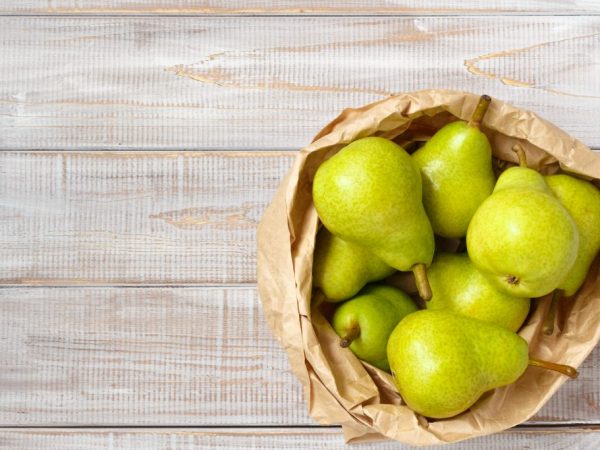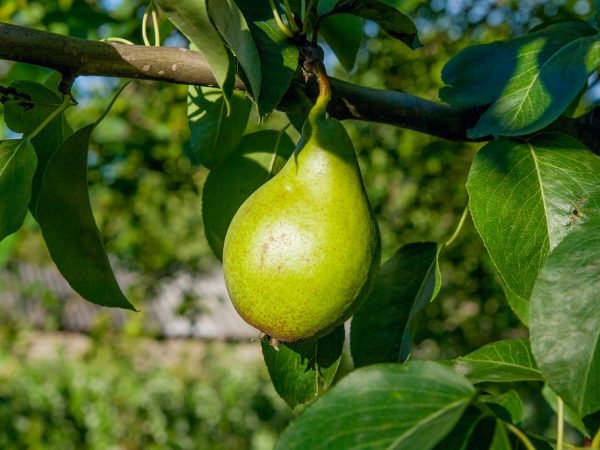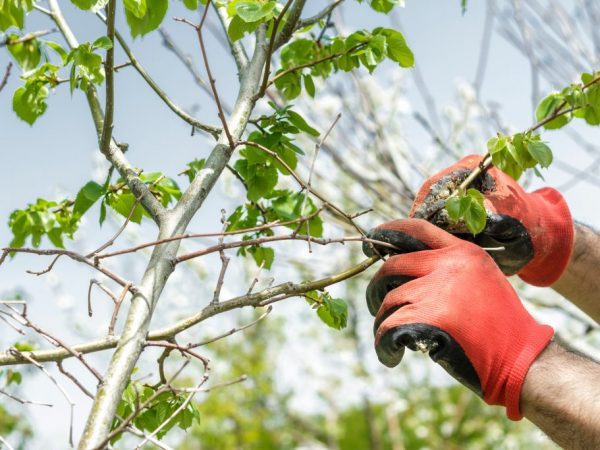Characteristics of pears of the Orlovskaya Letnyaya variety
Pear Orlovskaya Summer has been pleasing gardeners for more than 40 years. The variety was bred at the research institute in the Oryol region back in 1977. Initially, it was intended for planting in the middle zone of our country, but now it is grown outside its borders.

Characteristics of pears of the Orlovskaya Letnyaya variety
Characteristics of the variety
The pear variety Orlovskaya Letnyaya is distinguished by annual bountiful harvests. It belongs to the early species. The trees are harvested at the end of July. They have excellent taste and attractive appearance, but they do not last very long, which is typical for typical summer varieties.
Plants of this variety are referred to as triplodins. They are believed to have the best yields. The variety is characterized by large fruits that are not affected by fungal diseases. This contributes to the fact that Orlovskaya Letnaya is grown not only in summer cottages, but also for industrial purposes.
Orlovskaya Letnaya is the leader in fruit size among early maturing species. Due to the excellent taste of pears, they are eaten raw, and also used for making fruit salads, jams and preserves, added to baked goods, desserts, marmalade, and compotes.
Description of the tree
Plants are tall and spreading. The crown has a fairly symmetrical wide-pyramidal shape. The bark of the trunk is gray with a greenish tinge, on the shoots it is more brown.
The branches are thick, their number is reduced from bottom to top: at the bottom it is much more than at the top. The leaves are dark green in color and have an oval shape and a beautiful glossy surface.
The flowering is abundant and beautiful. Inflorescences are white and large enough.
Description of fruits
Pears weigh from 210 to 250-270 grams. All fruits are approximately the same size, have a classic shape, but slightly beveled.
At the stage of technical ripeness, the surface has a green color, which becomes slightly yellowish as it fully ripens. The fruit is characterized by a slight orange blush, which is formed by many points that merge into one.

All fruits are approximately the same size, have a classic shape,
The skin is very firm, smooth, without shine. The subcutaneous points are not very noticeable. The pulp is very firm, juicy and slightly oily. It has a white color, which becomes greenish closer to the skin.
Benefits
Among the advantages are the following:
- high productivity of plants;
- excellent taste and versatility of fruit use;
- cold resistance;
- unpretentiousness to care;
- resistance to the most common diseases;
- early maturity;
- large-fruited.
Landing
The main step in growing is choosing a good seedling and a suitable planting site. The tree must be intact, with good root system and shoots. For planting, choose a well-lit place without strong winds and drafts.
The planting hole is prepared in advance and 2 buckets of water are poured into it one and a half to two weeks before planting.The hole should be at least 70 cm in diameter and about 1 m deep.
Before planting, pre-prepared humus or wood ash is poured onto the bottom, after which a seedling is lowered into the pit. The root system should be freely located in it. Top covered with a mixture of soil and fertilizers.
It is important to ensure that the root collar remains above the ground surface. A funnel is formed around the tree, into which several buckets of water are immediately poured.
Care
The variety belongs to cold-resistant species, therefore, does not require additional shelters for the winter.
It is necessary to protect the plants from rodents who like to feast on the bark of the tree. To avoid this, the barrel is wrapped in a special metal mesh.
Pruning
Trees need pruning, which should be done in the spring and fall, starting from the second year of life. In the spring, excess shoots are trimmed, in the fall - sanitary, during which all dry and damaged branches are removed.

Pruning should be done in spring and autumn.
Watering
An integral part of the maintenance is regular loosening of the soil and regular watering. Young trees need more frequent watering than adults. Mature trees should be watered weekly only during the period of fruit ripening. The rest of the time - focus on the condition of the soil.
Possible diseases
A distinctive feature of the Oryol Summer Pear is its resistance to common diseases such as scab, fire blight and rust.
The description suggests that among the insects that often harm trees, one can distinguish green aphids, moths and suckers. You can fight them with the help of Bordeaux fluid.
Conclusion
The Orlovskaya Letnaya variety occupies a leading position among the early maturing species. Due to the fact that the plants are completely unpretentious to care, they can be grown on their site not only by experienced gardeners, but also by amateurs.


